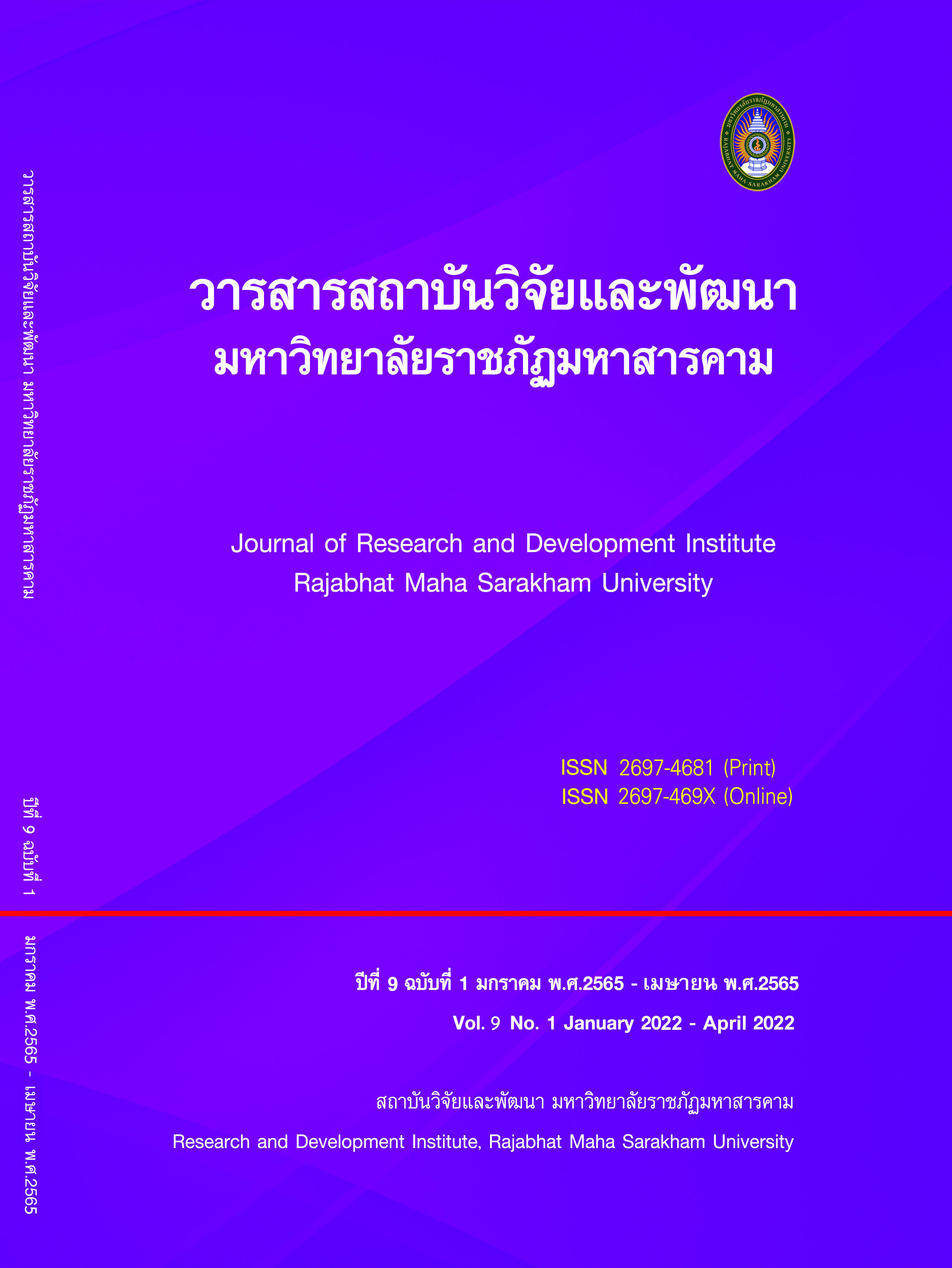The development of a chinese communicative skill: an application of dina model diagnostic test for grade 10 students
Keywords:
Competency Diagnostic Test, Competency in Chinese for Communication, Test Development, DINA Diagnostic ModelAbstract
The objectives of this research are to develop a diagnostic test for Chinese communication competency for Grade 10 students, to verify the quality of the diagnostic test for Chinese communication competency for Grade 10 students, and to analyze the patterns of Chinese language use in communication among Grade 10 students. They were chosen by purposive sampling method from 1 school in order to identify deficiencies and verify the quality of the assessment, item-by-item, using the DINA model. The whole assessment's reliability, and content validity were also verified. The participants were Grade 10 students who were studying in a Chinese language program in an extra-large school under The Secondary Educational Service Area Office 25. There were 220 samples chosen by Stratified Random Sampling method from 12 schools. Research instruments used in this study was a diagnostic assessment on Chinese language communication competency for Grade 10 students. The research results are as followed:
- The development of diagnostic test on Chinese language communication competency for Grade 10 students, including its content validity was examined by three experts. The results showed that the IOC valued between 0.67 - 1.00.
- The results of the diagnostic test on Chinese language communication competency for Grade 10 students was analyzed using the classical test theory after the pilot study with 60 students. It was found that the KR-20 was at 0.68. Item difficulties (p) had the lowest score at 0.48 and the highest at 0.72. The lowest discrimination power (r) was 0.17 and the highest was 0.67. Item Response Theory (IRT) was examined according to Two-Parameters Model and was found to have the lowest difficulty (b) of -8.61 and the highest of 118.49. The assessment had the lowest discrimination power (a) of -16.42 and the highest of 9.44. When verifying the diagnostic assessment with DINA Model, it was found that the guessing value was 0.16 at its highest and 0.00 at its lowest. The average guessing value was at 0.09. Slipping value had its highest of 1.00, lowest of 0.00, and the average of 0.48. The RMSEA had the highest value of 0.08, lowest of 0.00, and average of 0.01. The IDI had the highest value of 0.97, lowest of 0.04, and average of 0.52.
- The analysis of the use of Chinese language for communicative purpose among Grade 10 students shows that the most often found mistake was auxiliary verbs with only 4 percent of the probability of the correct usage, followed by using the right structure by 6 percent, vocabulary use by 8 percent and the use of the language in appropriate contexts by 11 percent.
References
De la Torre, J. (2009). A cognitive diagnosis model for cognitively based multiple-choice options. Applied Psychological Measurement, 33, 163-183.
Kanjanawasee, S. (2009). Traditional test theory. (6nded). Bangkok: ChulalongkornUniversity.
Kim, Y. H. (2011). Diagnosing EAP writing ability using the Reduced Reparametrized Unified Model. Language Testing, 28(4), 509-541.
Lee, J., & Corter, J. E. (2003). Diagnosis of bugs in multi-column subtraction using Bayesian Networks. Applied Psychological Measurement, 35(1), 27-47.
Lee, Y. W., & Sawaki, Y. (2009). Cognitive diagnosis approaches to language assessment: An overview. Language Assessment Quarterly, 6, 172-189.
Maydeu-Olivares, A., & Joe, H. (2014). Assessing approximate fit in categorical data analysis. Multivariate Behavioral Research, 49(4), 305-328.
Ministry of Education. (2009). Indicators and subjects of learning the core Learning group foreign language according to the core curriculum of basic education B.E. 2551. Bangkok: The Agricultural Cooperative Federation of Thailand.
Ngudkratok, S., & Keadsri, A. (2016). Assessment, diagnosis, knowledge of the science of junior high school students with the G-DINA model. Journal of Education Khon Kaen University, 41(4), 37-53.
Poonsawat, K. (2013). The development of diagnostic methods for the competence of the English language for communication for high school students in the third year (Master thesis). Bangkok: Chulalongkorn University.
Rupp, A. A., & Templin, J. L. (2008). Unique characteristics of diagnostic classification models: A comprehensive review of the current state-of-the-art. Measurement: Interdisciplinary Research and Perspectives, 6(4), 219–262.
Soysangwan, A. (2008). Development of diagnostic assessment methods using hierarchical models of features and computer-optimized testing (Doctoral dissertation). Bangkok: Chulalongkorn University.
Srichan, R. (2019). The development of a Japanese communicative competency diagnostic test for mathayomsuksa 4 students (Independent study). Khon Kaen: Khon Kaen University.
Tuntavanitch, P. (2015). Diagnostic test development by using cognitive diagnostic model. Journal of Graduate Research, 6(2), 1-13.
Worrasri, K. (2007). Development of the Thai reading diagnostic exam for grade students grade 4 in the province that speaks the Lanna Dialect. Bangkok: Chulalongkorn University.
Downloads
Published
How to Cite
Issue
Section
License
Copyright (c) 2022 Journal of Research and Development Institute Rajabhat Maha Sarakham University

This work is licensed under a Creative Commons Attribution-NonCommercial-NoDerivatives 4.0 International License.
Articles that are published are copyrighted by the authors of the articles







